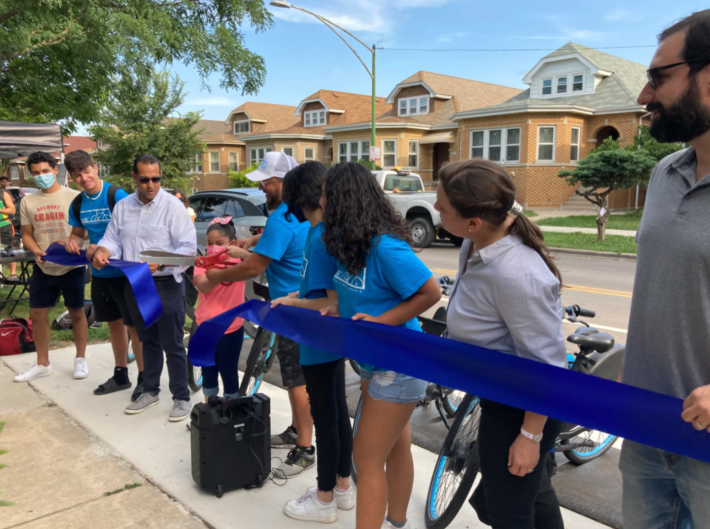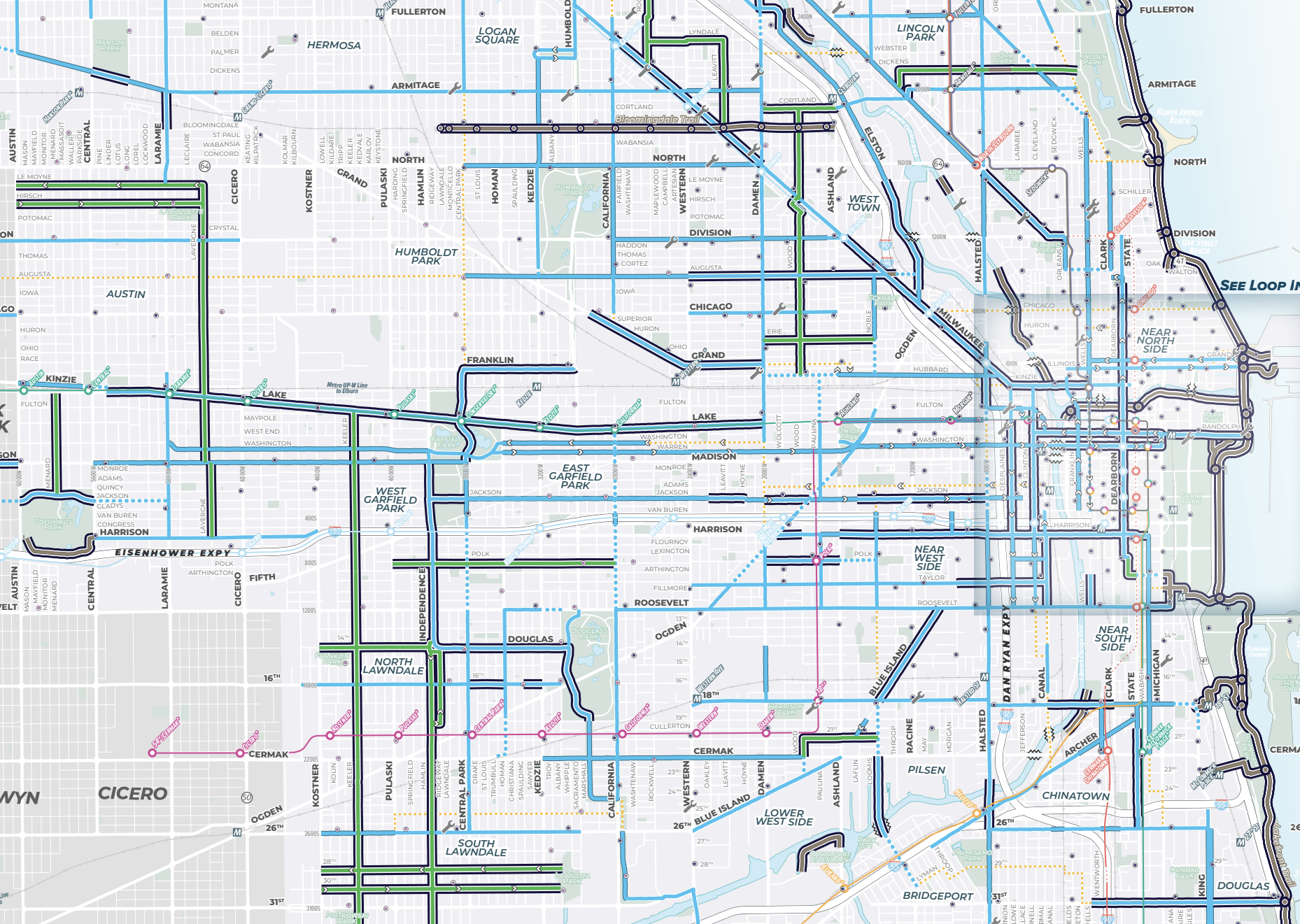
Earlier this month, the Active Transportation Alliance held one of its Advocacy Connect monthly online events to update members on recent Chicago walk/bike/transit projects and campaigns. The featured guest was the Chicago Department of Transportation's Complete Streets Director David Smith.

The host for the meeting was ATA's Managing Director of Advocacy Jim Merrell. He began the presentation by discussing the organization’s recent efforts to lower the default Chicago speed limit from 30 to 25 mph.
"The important thing when talking about this is, lowering the speed limit... being part of a package solution for safer streets," Merrell sad. "But it does have important impacts on policy change and intervention. There's really good evidence from other cities showing that just lowering the speed limit alone, without any other additional enforcement or infrastructure changes really has dropped some of the most dangerous speeding, over 40 miles an hour, by as much as 30 percent. So that's a huge impact from a relatively low-cost intervention." But he added that ATA obviously wants to see the city complete more street redesigns that calm traffic, encouraging safer speeds.
Merrell also talked about the proposed "one agency to rule them all" state legislation proposal to combine the Regional Transportation Authority, CTA, Metra, and Pace" into a single bureau, and create $150 million in new revenue for public transportation. In addition, the proposed Clean and Equitable Transportation Act would help address greenhouse gas emissions.
"People may have seen the climate action Lobby Day that took place [May 9] in Springfield,” said Merrell. "There were hundreds of people who went down to advocate for transit reform and other other climate justice issues. On the agenda, our friends at the Illinois Environmental Council did a great job organizing that."

Merrell then introduced Chicago Department of Transportation Complete Streets Director David Smith, who talked people through what the agency has been up to lately, sustainable transportation-wise. Find recent Streetsblog coverage of these projects here.

During the Q & A section, attendee Jack Warren asked Smith, "What cities in the U.S. and around the world does CDOT use as inspiration for what you want our streets to look like. In other words, who is doing it right and who should we copy?"
Smith responded by reframing the question. "In terms of who's doing things, right, you know, the city of Chicago is absolutely on that list," said. Of course, not everyone agrees with that sentiment – last year the national advocacy group People for Bikes made the debatable statement that Chicago was one of the very worst large American cities for biking.
"Like, it's not as if we aren't there and we're searching for inspiration on how to do things," Smith added. Prior to the ATA meeting, he came from an international conference of cities, several of which were paying attention and drawing influence from Chicago. However, he acknowledged that CDOT has tons of work to do to address our city's tragic traffic violence issues, and he said the department certainly feels a sense of urgency to do it.
"But I will say that there are a number of cities that are doing really great work around the country," said Smith. "I spent some time and connected with Washington, DC, and some of their transit folks. I think there's a lot of similarities in terms of where they're at in terms of transit, infrastructure and initiatives. And they're doing great work. The City of New York is doing great work. So there's a lot there's a lot going on. A lot of things that we're really connected to and you start looking internationally, Montreal, Vancouver, certainly inspirations. Cities in Central America as well. Mexico City is doing a ton. You've got the typical European cities, like Paris and Copenhagen. So there's a lot of inspiration to draw on."

Smith was also asked about CDOT's plans regarding scooters and other micr-mobility devices. He first first noted that the number of bike and scooter trips in Chicago is growing dramatically, and the landscape of transportation is changing quickly. "There's going to be more new devices that are ways for people to get around that, that we're not even talking about right now." He said it’s critical that they reimagine the design of there streets, policies, and programs to be focused not just on current travel patterns, but future ridership.
"But to directly answer the question, yes, scooters are certainly part of the cycling network," said Smith. "We just got hot off the press the 2024 Chicago Bike Map. So we do have lots of printed hard copies of those. If anybody's interested there. If you go to our city's website, there's a way to request bike maps. We're working on delivering the bike maps as we speak to all 50 ward offices to bike shops around the city... We have an electronic version of it on the website, as well, that people can access. And then we do have an interactive map."
The next ATA Advocacy Connect session will take place on Thursday, June 20 at 1 p.m., co-hosted by the statewide bike advocacy group Ride Illinois, discussing projects and campaigns in the Chicago suburbs. Register in advance here.
Merrell also encouraged attendees to check out ATA's listing of events for Chicago Bike Month, running for a few more weeks in the city and 'burbs.

Did you appreciate this post? Please consider making a tax-deductible donation.





